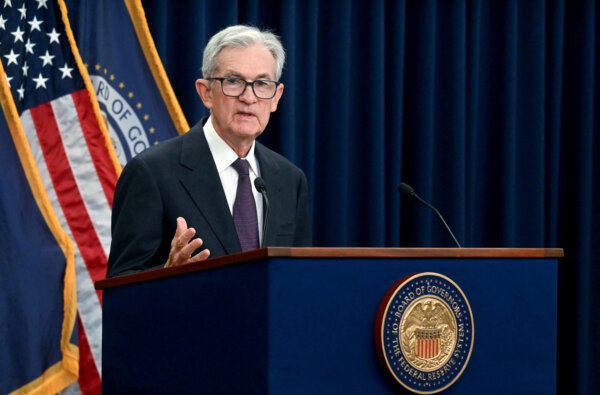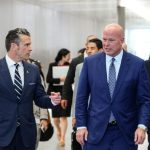![]() The Federal Reserve cut interest rates for the second straight meeting on Oct. 29 as policymakers take a cautious approach to easing monetary policy.
The Federal Reserve cut interest rates for the second straight meeting on Oct. 29 as policymakers take a cautious approach to easing monetary policy.
Officials voted to lower the benchmark federal funds rate—a key rate that influences borrowing costs for consumers and businesses—by a quarter point to a new target range of 3.75 percent to 4.00 percent.
“Job gains have slowed this year, and the unemployment rate has edged up but remained low through August; more recent indicators are consistent with these developments. Inflation has moved up since earlier in the year and remains somewhat elevated.”
The Fed also announced it will conclude its balance sheet drawdown on Dec. 1, and begin reinvesting mortgage-backed securities principal payments into treasury bills, or T-bills—short-term securities with maturities of one month to one year.
Prior to the meeting, investors had penciled in a 98 percent chance of a 25-basis-point reduction, according to the CME FedWatch Tool.
‘Much Lower, Much Sooner’
Despite the U.S. central bank being fully engaged in its easing cycle, President Donald Trump and his administration have been pushing for more aggressive rate cuts at an earlier stage.
Trump repeated his criticisms of Powell during his trip to Asia.
“We have a person that’s not at all smart right now. He should have been much lower, much sooner,” the president told reporters aboard Air Force One on Oct. 27.
“We’re not going to have a Fed that’s going to raise interest rates because they’re worried about inflation in three years from now,” Trump said on Oct. 29.
He also stated that his administration will appoint someone to the Fed “that we all like,” adding that the individual will support lower interest rates.
In the meantime, Miran has been advocating for an accelerated push to a neutral level, meaning interest rates neither stimulate nor restrict economic activity. He has wanted half-point rate cuts.
Others have expressed support for a gradual unwinding of tight policies.
Fed Gov. Christopher Waller, considered a top candidate to replace Powell next year, thinks interest rates should be about 100 to 125 basis points lower than they are today.
Waller has dismissed tariff-driven inflation, noting that the administration’s levies have had “modest effects on inflation.” Instead, he will be examining “how the solid GDP data reconcile with the softening labor market.”
“What I would want to avoid is rekindling inflationary pressure by moving too quickly and squandering the significant progress we have made taming inflation,” he said.
In the September Consumer Price Index report, there were signs that the president’s higher import duties were beginning to modestly affect tariff-sensitive items, such as apparel and new vehicles.
Minutes from last month’s rate-setting committee meeting revealed that policymakers viewed risks to inflation as diminished or unchanged, but they expressed concerns about a worsening labor market.
Absent key government economic data, officials have been relying on alternative, private-sector data to determine the current state of employment conditions.
Because the central bank views data from sources like the Bureau of Labor Statistics or the Bureau of Economic Analysis as the gold standard, it could be harder for the Fed to craft policies.
The Fed will convene its next two-day policy meeting on Dec. 9.











